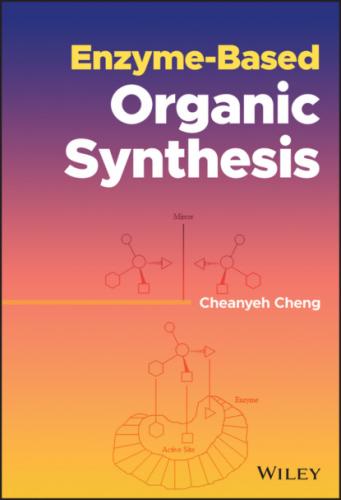Scheme 2.38 Yeast mediated enantioselective reduction of ethyl benzoylacetate and substituted derivatives.
Although water is the first choice as solvent for biocatalysis, the low solubility of organic compounds in water, difficult product separation, and potential side reactions caused by other enzymes in the cell have led to alternative solvents being sought. Since optically pure (S)‐1‐(4′‐methoxyphenyl) ethanol ((S)‐MOPE) is a potential synthon for the preparation of cycloalkyl [b] indoles in clinical treatment of general allergic response, whole microbial cells have been used to synthesize for enantiopure (S)‐MOPE from 4′‐methoxyacetophenone (MOAP) in aqueous systems [165]. Recently, the bioreduction of MOAP to (S)‐MOPE has been successfully performed in a hydrophilic ionic liquid (IL) containing cosolvent system using immobilized Rhodotorula sp. AS2.2241 cells. The novel IL 1‐(2′‐hydroxy)ethyl‐3‐methylimidazolium nitrate (C2OHMIM•NO3) gave the best results. Under the optimized conditions of pH 8.5, a temperature of 25 °C, and an optimal C2OHMIM•NO3 content of 5.0% (v/v), 12 mM, the initial reaction rate, the maximum yield, and the product e.e. were 9.8 μmol h–1 (g cell)–1, 98.3%, and >99%, respectively. Also, the cells exhibited excellent operational stability with the cosolvent system. Moreover, the established system has been highly efficiently applied for the reduction of many other aryl ketones [166]. Immobilization of whole cell of Geotrichum candidum onto an ion exchange resin with polyallylamine was used for the enantioselective bioreduction of various ketones, such as acetophenone, ortho‐fluoro and para‐fluoro acetophenone, ortho‐methyl, 2‐phenylethyl methyl ketone, and phenyl trifluoromethane ketone, in aqueous and supercritical CO2 (scCO2) solvents. The immobilization of the cell improved not only the enantioselectivity but also the stability and enabled a continuous‐flow reaction in aqueous solution. Recycling of the immobilized cell accompanying scCO2 depressurization and continuous‐flow reaction was also made when the reaction was performed in scCO2 [167]. Hydrophobic ketone such as phenyl n‐propyl ketone has been used as a model compound to survey ADH activity in S. cerevisiae. The enantioselectivity of yeast mediated reduction toward the product (R)‐(+)‐ or (S)‐(−)‐1‐phenyl‐1‐butanol was found to depend on the hexane‐to‐water volume percentage of biphasic cell culture and the cofactor zinc ion [167]. Without Zn2+ ion the biphasic cultures of middle to high hexane‐to‐water volume percentage possessed (R)‐enantiomeric excess (54% to >99%) and (S)‐enantiomeric excess (15–47%) for low hexane‐to‐water volume percentage. With Zn2+ ion in the biphasic cultures, the enantioselectivity was exclusively (S)‐enantiomeric excess (28% to >99%). The bioreduction mediated with the yeast C. utilis of aqueous cultures showed an (S)‐enantiomeric excess of 79–95% [144]. Glycerol is a nontoxic, biodegradable, and recyclable liquid and has a high boiling point and negligible vapor pressure that make it an ideal green reaction medium for many catalytic and non‐catalytic organic syntheses. The high polarity of glycerol favorably facilitates the simple baker’s yeast mediated reduction of benzaldehyde and ethyl acetoacetate because glycerol can dissolve glucose and ethyl acetoacetate and suspend baker’s yeast. The use of glycerol as reaction medium for baker’s yeast mediated reduction produced a high product yield and >99% enantioselectivity with either free or immobilized cells [168].
The ADH obtained from Thermus sp. ATN1 (TADH) is an NAD(H)‐dependent enzyme, which shows a very broad substrate spectrum including aldehydes, aliphatic ketones, cyclic ketones, and double‐ring systems and produces exclusively the (S)‐enantiomer in high enantiomeric excess (>99%) for ketones. TADH can be used in the presence of 10% (v/v) water‐miscible solvents like 2‐propanol or acetone, which plays as sacrificial substrate in substrate‐coupled cofactor regeneration reactions. TADH retained 80% of its activity when water‐insoluble solvent like hexane or octane is used as cosolvent that forms an aqueous/organic biphasic reaction medium to allow the reaction of low‐water‐soluble substrates [169].
Asymmetric reduction of ketones to pure alcohols has been applied for material chemistry. For example, by carefully selecting the right ADH, the enantiomerically pure (S)‐ and the (R)‐monomers were biosynthesized from the p‐vinylacetophenone. Then, varied ratio of (S)‐ and (R)‐monomers can be polymerized to prepare different polymers via free‐radical polymerization. The polymers formed from the (S)‐ and (R)‐monomer mixtures had a number‐average molecular weight (M n ) of 5000–6000 g mol−1 and a polydispersity of 1.7–2.1. The thermal properties of the polymer material (T g) can be further fine‐tuned by enantioselective grafting of the (R)‐alcohol groups with vinylacetate by a lipase (Scheme 2.39). Therefore, a decrease of T g for the acetylation modified polymers was shown by the differential scanning calorimetry (DSC) analysis [170].
Scheme 2.39 Asymmetric reduction of ketones and polymerization of the optically pure monomers for application in material chemistry.
2.2.2 Reduction of C═C Bonds
The asymmetric bioreduction of activated C=C bonds with the generation of up to two stereogenic centers is one of the most widely employed synthetic strategies for producing chiral molecules [171, 172]. Enoate reductases (ERs), NAD(P)H‐dependent flavin mononucleotide (FMN)‐containing oxidoreductases from the “Old Yellow Enzyme (OYE)” family (E.C. 1.6.99.1) [171, 173], are widely distributed in microorganisms such as bacteria [174], yeast [175], and filamentous fungi [176] and in higher plants [177] and stereoselectively catalyze the reduction of activated C=C bonds containing electron‐withdrawing groups (EWG) such as α,β‐unsaturated ketones, aldehydes, nitroalkenes, carboxylic acids, and derivatives (ester, anhydride, lactone, and cyclic imide), thus, affording the production of fine chemicals, pharmaceuticals, and agrochemical intermediates. Note that
